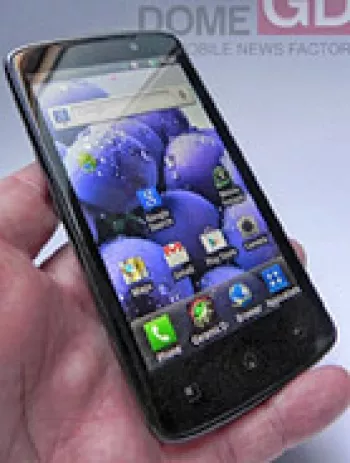
Network
The LG Wink Style T310 operates on GSM technology, which was the standard for mobile communications at the time of its release. It supports the 2G frequency bands GSM 850 / 900 / 1800 / 1900, allowing it to be used in most parts of the world. The device also supports GPRS Class 10 and EDGE Class 10, enabling basic internet connectivity, although at much slower speeds compared to modern 3G or 4G networks.
Launch
The LG Wink Style T310 was both announced and released in August 2010, a time when feature phones were still prevalent among consumers. However, the device has since been discontinued, as is typical with technological products over a decade old due to advances in newer mobile technologies.
Body
Measuring 102.9 x 56.9 x 11.9 mm and weighing 86.5 grams, the LG Wink Style T310 was designed to be compact and lightweight, making it easy to carry. It uses a Mini-SIM card, one of the standard SIM card sizes at the time. The device's small dimensions contribute to its portability, a key factor for users who prioritize a simple and practical mobile experience.
Display
The LG Wink Style T310 features a 2.8-inch TFT resistive touchscreen. Although the resistive touchscreen technology was common at the time, it required more pressure when tapping compared to capacitive screens used in modern smartphones. The display supports 256K colors and has a resolution of 240 x 320 pixels, which translates to a pixel density of approximately 143 ppi. This allowed for basic visual clarity, sufficient for viewing messages and basic applications.
Memory
Internally, the LG Wink Style T310 comes with 20MB of storage, which is quite limited by today’s standards but was typical for feature phones of its era. The device does, however, offer expandability through a microSDHC card slot, allowing users to add additional storage space. The phonebook can store up to 1000 contacts with photocall, and users can keep records of 100 received, 100 dialed, and 100 missed calls.
Main Camera
The LG Wink Style T310 is equipped with a 2 MP rear camera capable of capturing basic photos and recording video at 320p resolution at 15fps. This level of detail might not compare to modern smartphones but provided a basic means for casual photography at the time of its release.
Sound
For audio, the device includes a loudspeaker and a 3.5mm headphone jack, which was the standard for personal audio devices at the time. These features allowed users to listen to music or make calls using standard earphones or connected audio devices.
Comms
The LG Wink Style T310 includes basic comms features such as Wi-Fi 802.11 b/g for wireless internet access, although its availability was dependent on the carrier. Bluetooth 2.1 with A2DP and EDR enabled wireless connections to other devices, such as headsets or other phones. The phone also includes stereo FM radio with RDS and a built-in antenna, giving users access to over-the-air radio broadcasts.
Features
Additional features of the LG Wink Style T310 include basic sensors common to its time, messaging capabilities such as SMS, MMS, Email, and Instant Messaging. The WAP 2.0/xHTML and HTML browser allowed for limited internet browsing. Java MIDP 2.1 support means that the device could run simple Java-based applications and games.
Battery
The phone is powered by a removable Li-Ion 900 mAh battery. According to the manufacturer's specifications, the battery offers up to 350 hours of stand-by time and up to 3 hours of talk time. Its removable nature allowed users to replace the battery if it depleted or malfunctioned, extending the overall life of the device.
Miscellaneous
Consumers could choose the LG Wink Style T310 in various color options, including Black & Red, White & Orange, Black & Titan Silver, and Pink & White. The device had a SAR rating of 1.08 W/kg (head) and 0.56 W/kg (body), with the EU SAR ratings being slightly different. Upon release, the phone was priced at about 60 EUR, positioning it as a budget-friendly option suitable for a wide range of customers.
Key Features of LG Wink Style T310
- Compact and lightweight design with a weight of only 86.5 g.
- 2.8-inch TFT resistive touchscreen with support for 256K colors.
- Expandable storage with a microSDHC card slot.
- 2 MP main camera capable of 320p video recording.
- Supports Wi-Fi 802.11 b/g (carrier dependent) and Bluetooth 2.1 with A2DP and EDR.
- Equipped with a stereo FM radio with RDS and a built-in antenna.
- Removable Li-Ion 900 mAh battery providing up to 350 hours of standby time.
- Available in multiple color options: Black&Red, White&Orange, Black&Titan Silver, Pink&White.
Disadvantages of LG Wink Style T310
- Lacks 3G and 4G network support; limited to 2G (GSM) only.
- Small internal memory of only 20MB.
- Resistive touchscreen which is generally less responsive compared to capacitive touchscreens.
- No positioning features like GPS.
- Basic 2 MP main camera with low video resolution (320p@15fps).
- No front-facing (selfie) camera.
- Low screen resolution of 240 x 320 pixels with a density of approximately 143 ppi.
- Limited battery life, with up to 3 hours of talk time.
- No advanced sensors included on the device.

View Also
More Phones
All Rights Reserved +14266 Phones © Mobilawy 2025

























